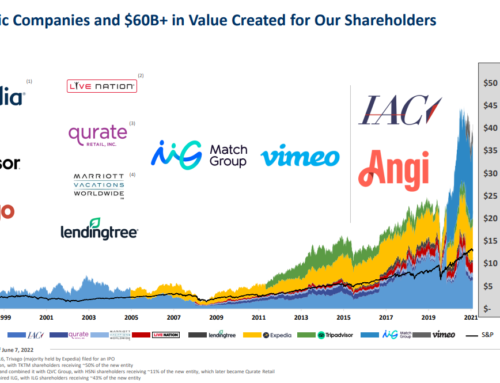3 Biases to Avoid as a Special Situations Investor
I was recently interviewed for a podcast, and the host asked me about behavioral biases.
Specifically, the host asked:
What are the behavioral biases most commonly found around special situation investing?
For me, the 3 most relevant biases are:
- Disposition Effect
- Overconfidence Effect.
- Consistency Bias.
Today, I want to explore those biases, mistakes I’ve made because of them and how I plan to mitigate them going forward.
Disposition Effect
“The disposition effect refers to our tendency to prematurely sell assets that have made financial gains, while holding on to assets that are losing money. We are driven to sell our winning investments in order to ensure a profit but are averse to selling losing investments in hopes of turning them into gains.”
Most traders will tell you to “ride your winners and cut your losers.”
I think traders are so good at this because they don’t get emotionally attached to their stocks. If their stocks aren’t working, they sell and move on to something else.
I actually don’t think I’ve made too many mistakes selling too early.
The one mistake I did make was selling Thungela Resources too early. The stock was a massive winner for me, but it was pulling back sharply, and I got spooked and wanted to “lock in” my gains.
I should have just trusted my analysis and held on.
The one area where I really think I can improve is in selling my losers.
One painful loser was Aptevo Therapeutics (APVO).
At the time of my investment case, the stock traded at $32, and Tang Capital had offered to buy the company for $50 per share and owned 42% of shares outstanding.
Tang said that if management did not accept his offer, he would run a proxy contest at the shareholder meeting asking shareholders whether the company should be sold to the highest bidder.
I thought the risk reward looked pretty good!
Management basically ignored Tang’s offer but did include a question in the proxy on whether the company should be sold to the highest bidder.
Shareholders voted “yes” but management ignored the vote and didn’t run a process.
At the time, the stock price was $22/share and looked cheap (Aptevo had a significant amount of cash, future milestone payments, and a pipeline).
So I held on.
But in hindsight, I should have sold.
Even though the stock was “cheap,” the thesis was broken and micro-caps can get a lot “cheaper.”
In the future, I’m going to try to cut my losses earlier, if the investment case changes.
Overconfidence
“The overconfidence effect is a well-established bias in which a person’s subjective confidence in their judgments is reliably greater than the objective accuracy of those judgments, especially when confidence is relatively high. Overconfidence is one example of a miscalibration of subjective probabilities.”
A perfect example of the Overconfidence Bias:
According to AAA, 8 out of 10 men think they are above average drivers.
The area where I’ve been overconfident is in judging estimated downside cases.
When analyzing small and micro-cap stocks, especially in commodity areas, the downside is usually 80% or 100%.
Consistency Bias
“Commitment & Consistency Bias: People’s strong desire to be—and to appear—consistent with what they have already done. Once people have made a commitment or taken a stand, they feel pressure to behave consistently with that commitment”
This one is particularly tough for newsletter writers who write their opinions constantly.
If you’ve published a bullish investment case on a stock, you will feel pressure to stay consistent with what you’ve published.
If the investment case changes, it’s easy to rationalize continuing to hold the stock.
But it’s usually better to sell and move on to another idea.
You can always revisit an idea at a later point in time if you believe selling was a mistake.
What biases do you find most troublesome?







Leave A Comment